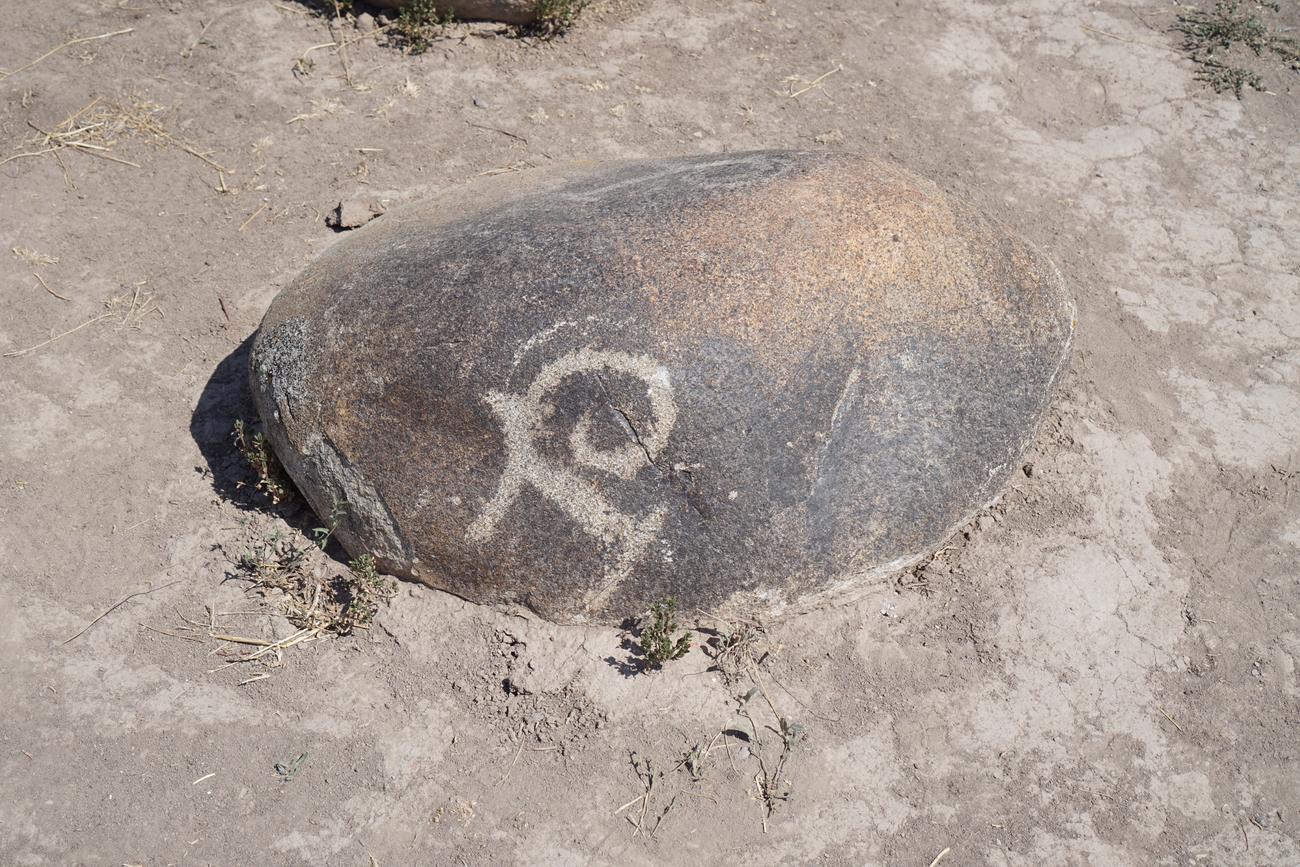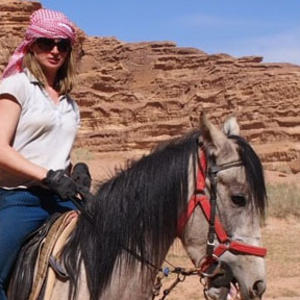We arrive in Bishkek, the capital of Kyrgyzstan in the early hours of the morning. With a population of 1 million and 6.2 million people residing in the whole of Kyrgyzstan, it is one of the smallest of the Central Asia ‘Stans’. Bishkek sits at 800m above sea level providing a good gateway into the Tien Shan (Celestial) mountain range that it borders, where one-third of the country is permanently covered in snow. As we learn it is a place of phenomenal natural beauty, full of vast mountains interspersed with sweeping steppes, primal forests and an abundance of lakes.
After a few hours rest at our hotel in the city centre, we make our way to Osh Bazaar. At the Bazaar, one is met with an onslaught of any and everything one might need. From everyday goods like food, clothing and household items to khaki gear left by the Russian army, horse saddles, plastic bags, souvenirs and cribs; the list goes on and on. I was quite taken by the rows of traditional women's Kyrgyz coats and had one handmade which made me feel quite special and proved to be very warm and practical whilst wild camping.
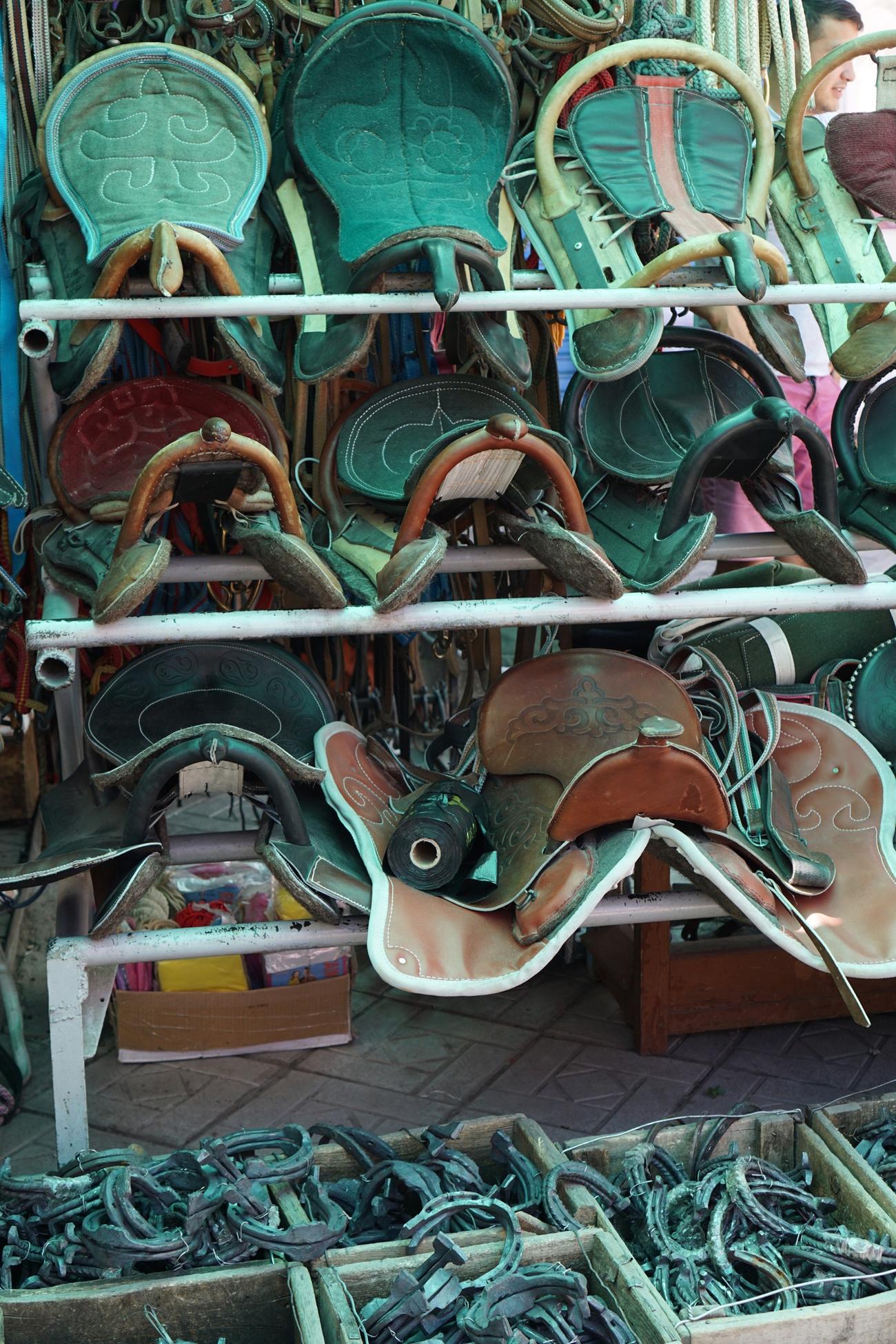
Onwards to lunch and a glimpse of the meat feast I had read about. We compensated by ordering lots of delicious salads - shredded beetroot and walnut, cucumber and tomato, roasted aubergine, greek salad and a caesar salad. All served with a tasty dressing over them. Accompanying the salads were potatoes, meat skewers and a platter of chicken, beef, veal and mutton. This lengthy, drawn-out lunch did the job of saving us from the sweltering heat, where the mercury was two digits shy of forty degrees. Needless to say, we needed a rest after digesting so much protein so we delayed our city tour until the evening hoping to walk up a further appetite.
We began our city tour in the square Ala-Too and saw buildings made of large blocks of marble and heard how one president of Kyrgyzstan wanted all the state buildings to be formed in this white marble with huge columns. Strong lines could be seen everywhere. From their statues of leaders, writers and poets, to their buildings, characterised by a massive monolithic and ‘blocky’ appearance with a rigid geometry style. This Brutalist architecture which began here in the 20th century is perfectly represented in the statue of Manas outside the state history museum where the two structures evoke strength and power. Manas, a famous Kyrgyz poet whose verses are said to be longer than Homer’s Iliad is depicted astride his horse in remembrance of when he tried to unite warring tribes in the 17th century. He is the symbol of Kyrgyz self-identification.
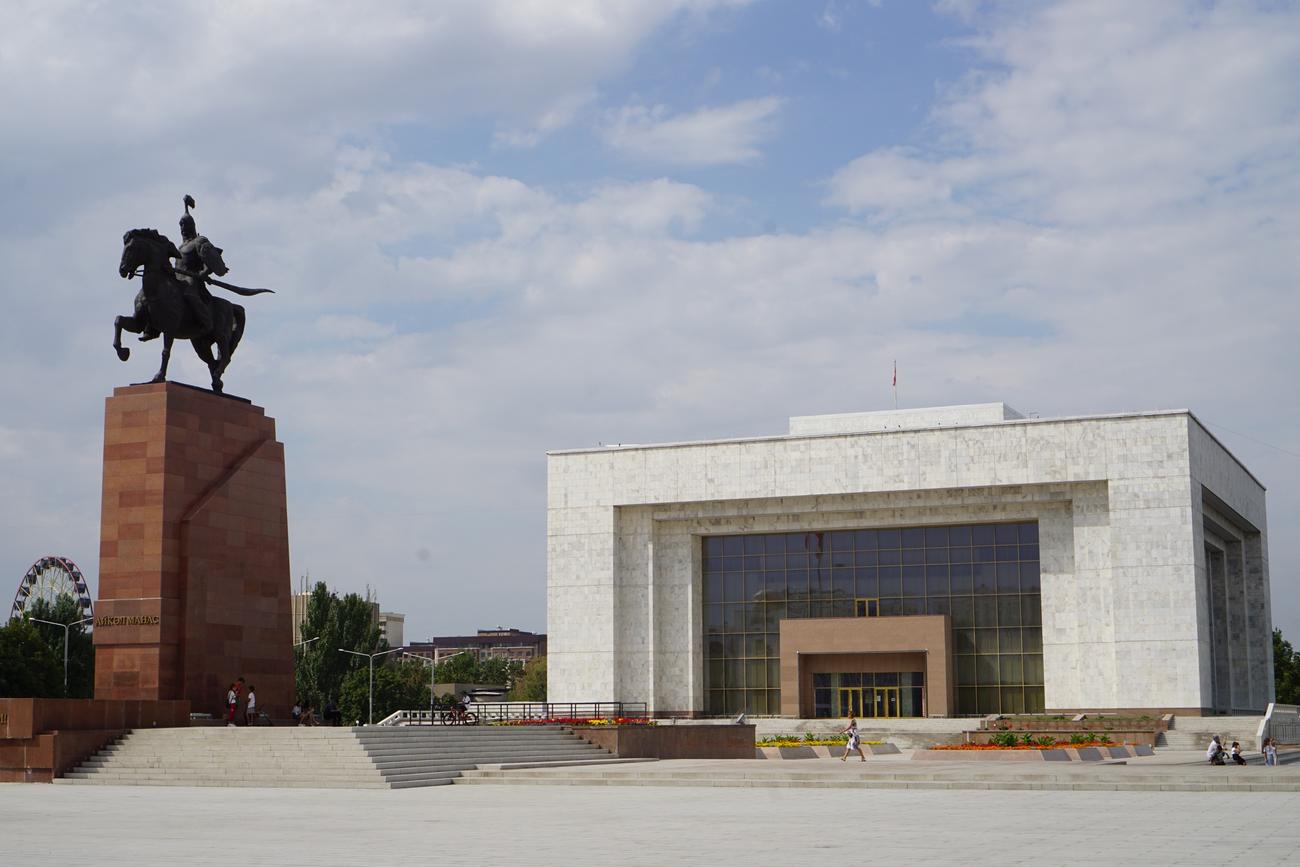
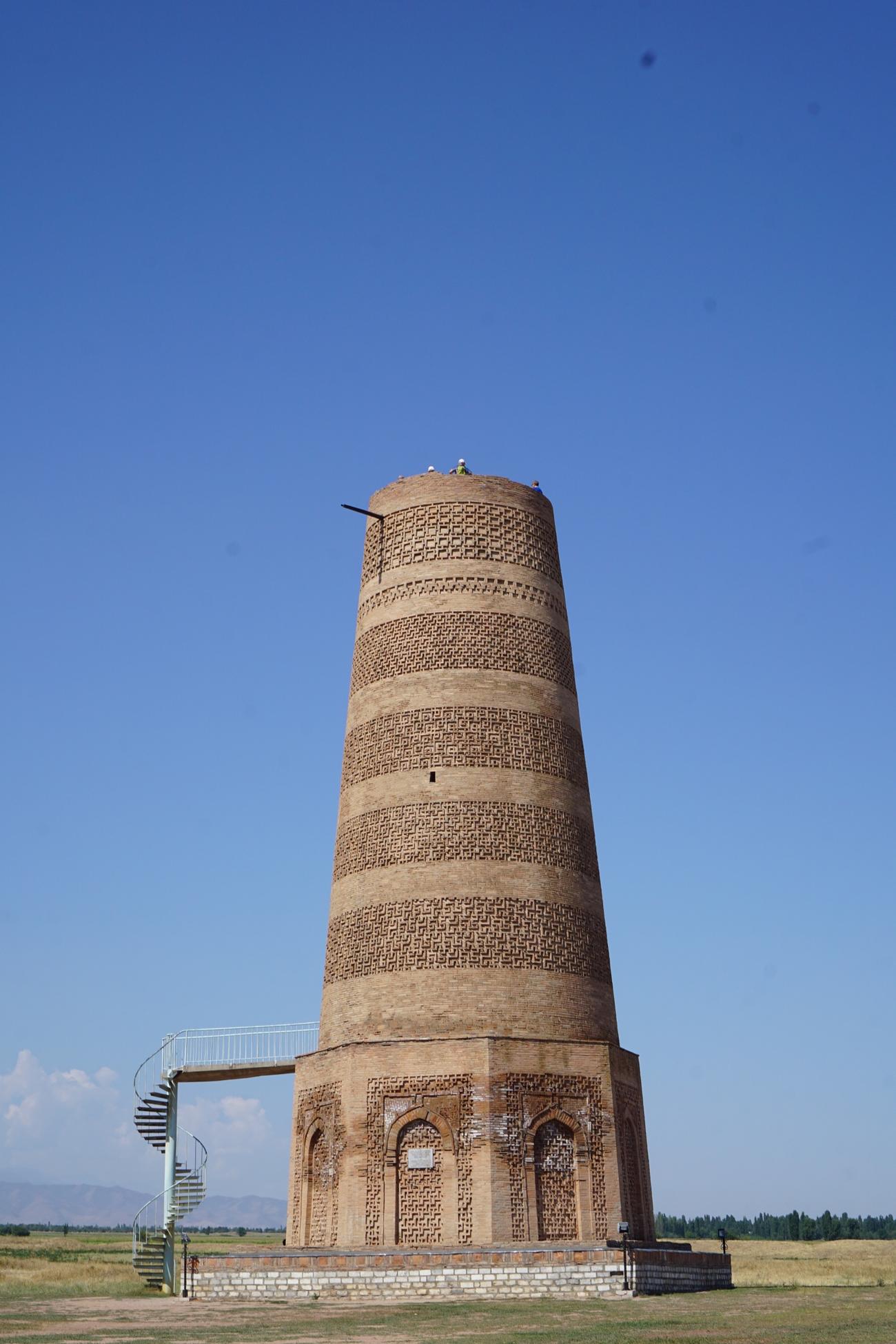
Leaving the city the next day we head towards Issy Kul, the second largest saline lake in the world, stopping at the site of an eleventh-century minaret called Burana Tower. It is one of the oldest archaeological sites in Central Asia. Here we learn more about the history of the nomadic Kyrgyz people, their lives before Soviet power and their battles against other neighbouring nations. Burana Tower now sits at 25m where once the minaret stood tall at 40m, it is all that remains of the ancient city of Balasagun. One of Kyrgyzstan’s most famous historical sites built by a Khan who ruled over the Karakhanid Empire. A Turkic Dynasty that ruled from China to the Aral Sea, the lost sea of Central Asia.
A winding climb to the top of the minaret rewards you with some lovely panoramic views. The climb down, however, can be vertigo-inducing as there are no handrails and what light streams through the narrow watch-tower windows is little more than a flicker.
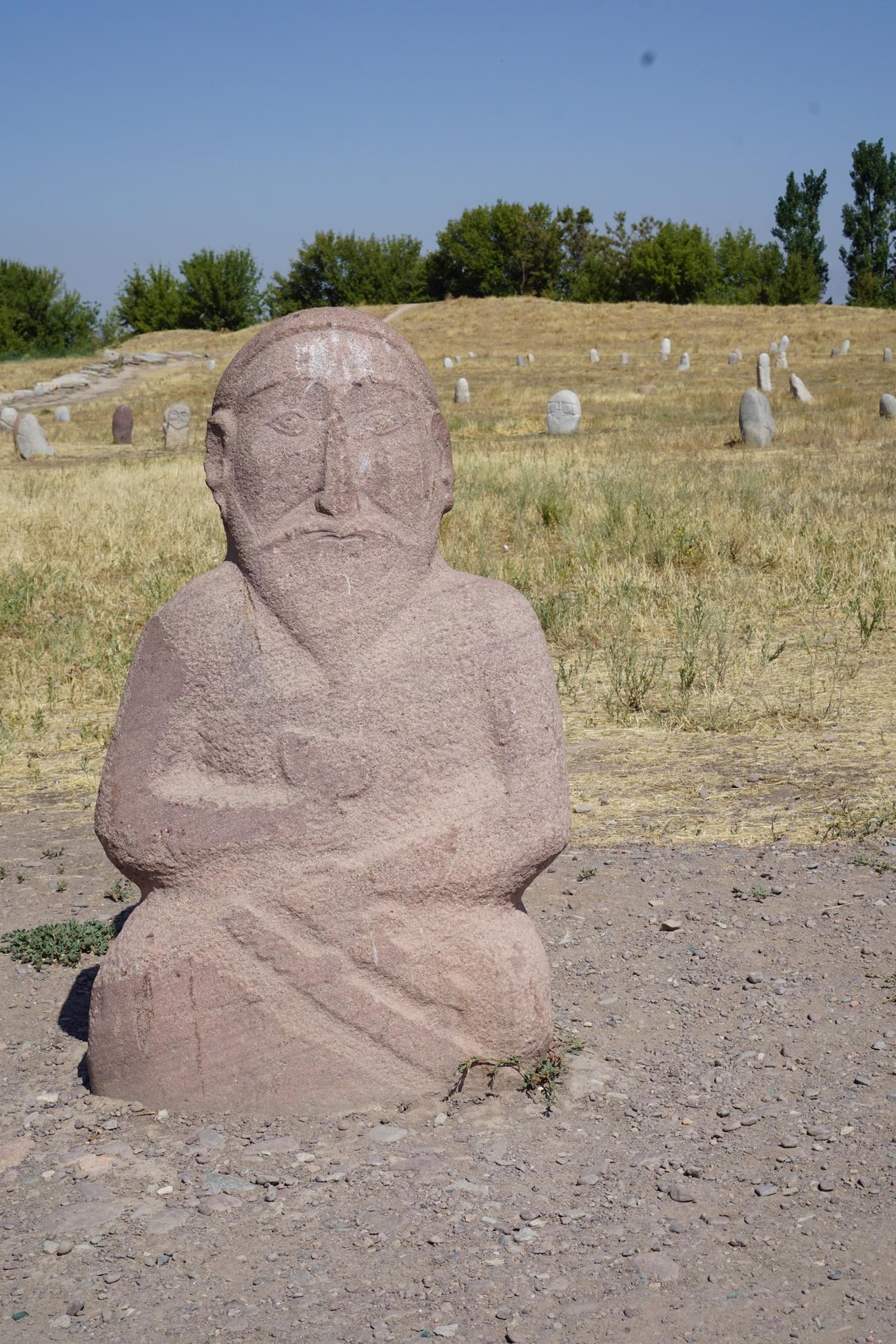
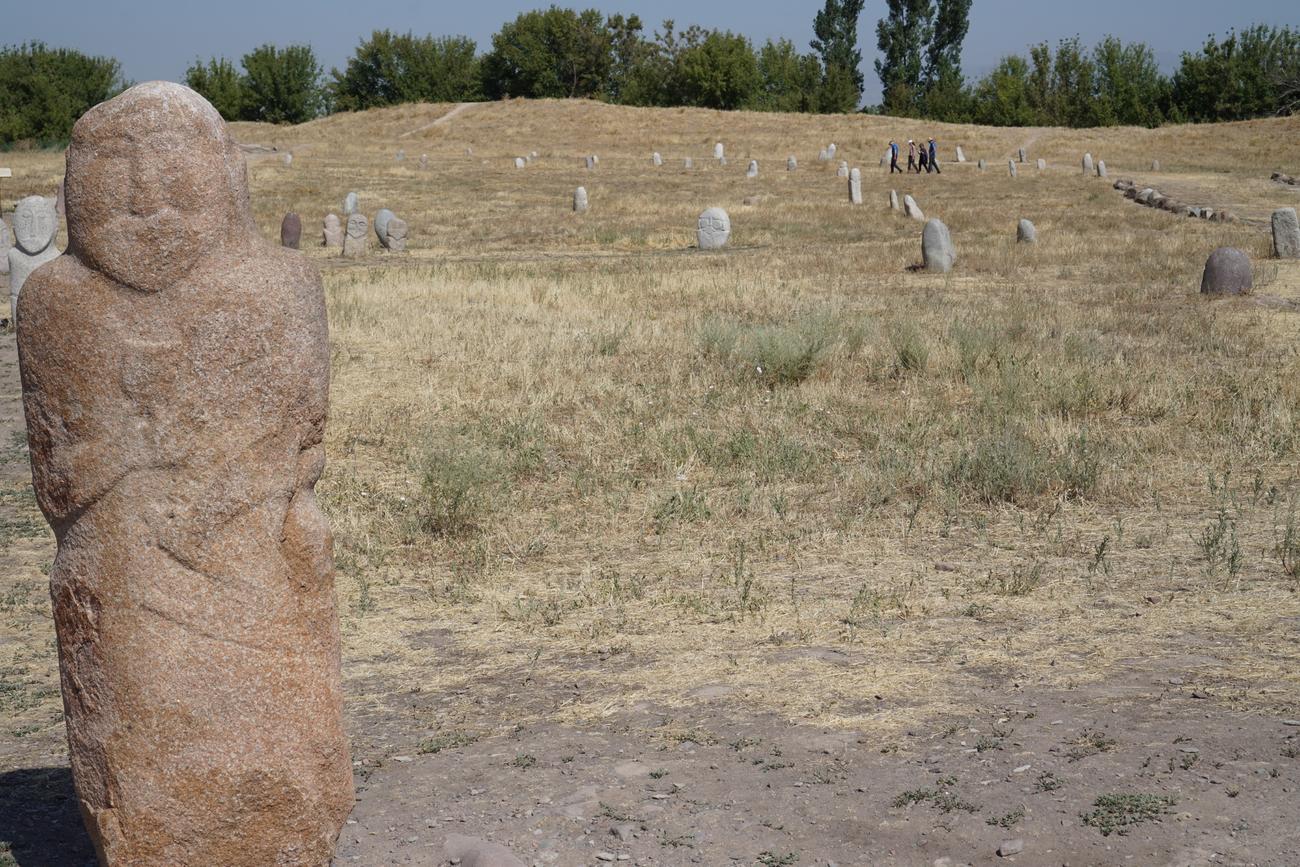
Along with the minaret there is a collection of Bal-Bals in the field nearby. Bal-Bals are ancient gravestones that were used before Islam by nomadic Turkic tribes in the 6th century. Petroglyphs were also uncovered here dating back to the 2nd century depicting common animals from the area, like the ibex. Seeing the petroglyph of the ibex we all get excited at the prospect that we too might witness one on our travels through this land.
